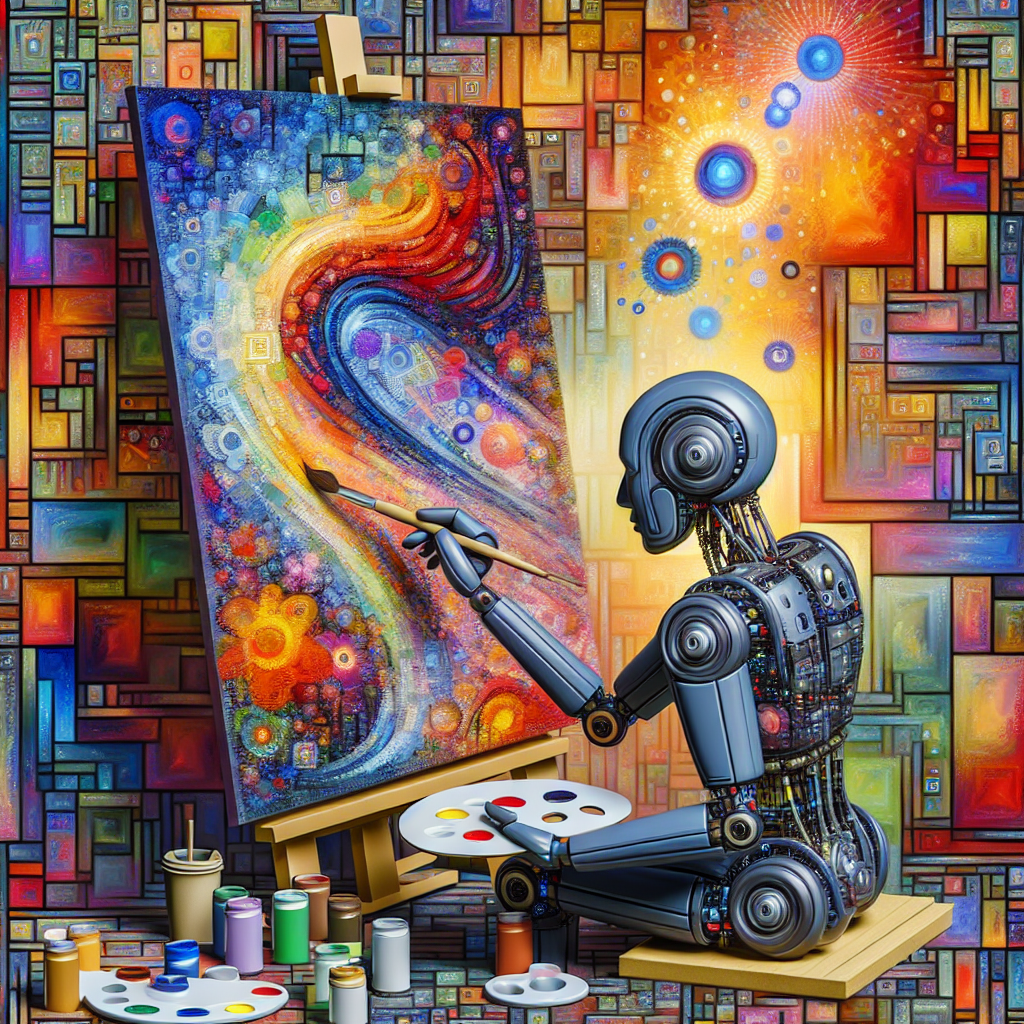Artificial Intelligence (AI) has been increasingly used in various fields, including art and design. AI-generated artworks have gained popularity in recent years, with many artists and designers exploring the potential of AI to create unique and innovative pieces. The aesthetics of AI-generated artworks have sparked debates and discussions about the nature of creativity, authorship, and the role of technology in art. In this article, we will explore the aesthetics of AI-generated artworks, their impact on the art world, and the questions they raise about art and technology.
The Aesthetics of AI-Generated Artworks
AI-generated artworks are created using algorithms and machine learning techniques to generate images, music, poetry, and other forms of art. These algorithms are trained on vast amounts of data, allowing them to learn patterns, styles, and techniques from existing artworks. AI can then generate new artworks based on these learned patterns, often producing surprising and unexpected results.
One of the key features of AI-generated artworks is their ability to create novel and unique pieces that challenge traditional notions of art and creativity. AI can combine elements from different styles, genres, and periods, creating artworks that are both familiar and unfamiliar. This blending of styles can result in artworks that are visually striking, thought-provoking, and emotionally resonant.
AI-generated artworks also raise questions about the nature of authorship and the role of the artist in the creative process. While AI algorithms create the artworks, they do not have consciousness, emotions, or intentions in the same way that human artists do. This raises questions about the agency of the artist, the authenticity of the artwork, and the relationship between art and technology.
The aesthetics of AI-generated artworks can vary widely, depending on the algorithms, data, and parameters used in their creation. Some AI-generated artworks mimic traditional styles, such as Impressionism or Cubism, while others create entirely new styles and forms. The use of AI in art allows artists and designers to explore new aesthetic possibilities, pushing the boundaries of what is considered art.
The Impact of AI-Generated Artworks on the Art World
AI-generated artworks have had a significant impact on the art world, challenging traditional notions of art, creativity, and authorship. Many artists and designers are using AI to create innovative and experimental artworks that push the boundaries of what is possible in art. AI has also democratized the creation of art, allowing anyone with access to the technology to create unique and original pieces.
AI-generated artworks have also raised questions about the future of art and the role of technology in shaping artistic expression. Some critics argue that AI-generated artworks lack the emotional depth and conceptual complexity of human-created art, while others see them as a new form of artistic expression that expands the possibilities of what art can be.
The use of AI in art has also sparked debates about the role of the artist in the creative process. Some artists see AI as a tool that can enhance their creativity and help them explore new ideas and techniques. Others worry that AI will replace human artists and diminish the value of human creativity and skill.
Overall, AI-generated artworks have the potential to transform the art world, opening up new possibilities for artistic expression and challenging traditional notions of art and creativity.
FAQs
Q: Can AI be considered a true artist?
A: AI algorithms can create artworks that are visually striking and emotionally resonant, but they lack consciousness, emotions, and intentions in the same way that human artists do. While AI can create unique and innovative pieces, it is ultimately a tool that is programmed and controlled by humans. Whether AI can be considered a true artist is a matter of debate and interpretation.
Q: Are AI-generated artworks considered authentic?
A: The authenticity of AI-generated artworks is a complex and nuanced issue. While AI algorithms create the artworks, they are trained on existing data and patterns, raising questions about originality and creativity. Some argue that AI-generated artworks lack the authenticity and emotional depth of human-created art, while others see them as a new form of artistic expression that expands the possibilities of what art can be.
Q: What is the future of AI-generated art?
A: The future of AI-generated art is uncertain, but it is likely to continue to evolve and grow in popularity. Many artists and designers are exploring the potential of AI to create innovative and experimental artworks that challenge traditional notions of art and creativity. As AI technology advances, we can expect to see even more exciting and groundbreaking artworks created using AI algorithms.
In conclusion, the aesthetics of AI-generated artworks have the potential to transform the art world, opening up new possibilities for artistic expression and challenging traditional notions of art and creativity. AI-generated artworks raise questions about the nature of creativity, authorship, and the role of technology in art. Whether AI can be considered a true artist, the authenticity of AI-generated artworks, and the future of AI-generated art are all complex and nuanced issues that are likely to continue to be debated and explored in the years to come.

